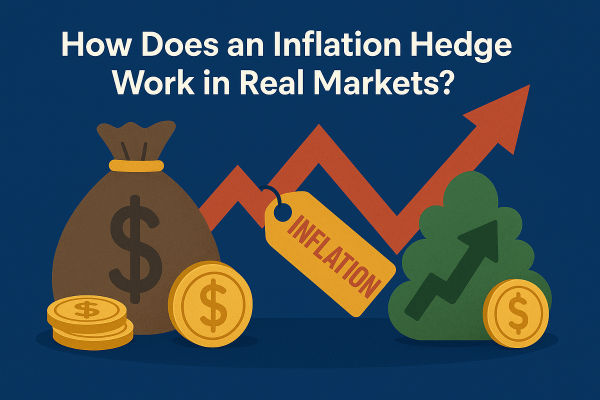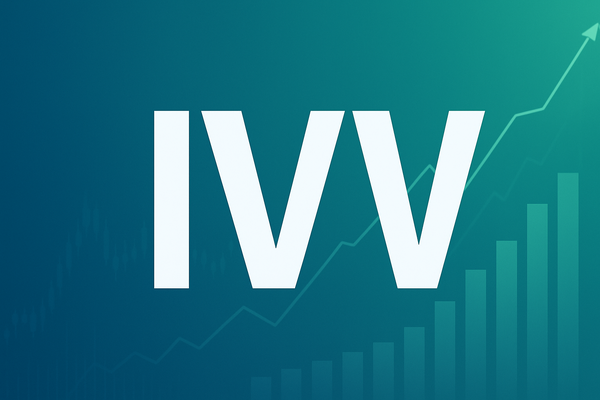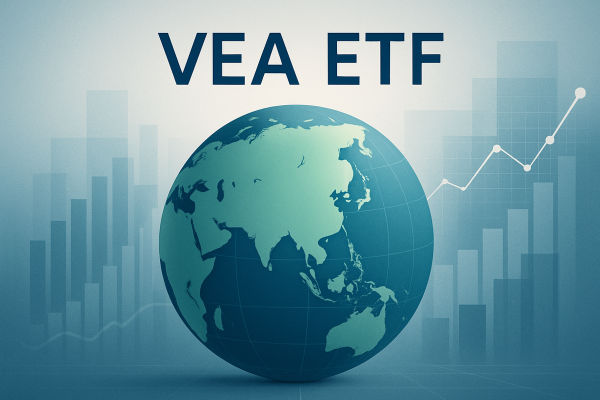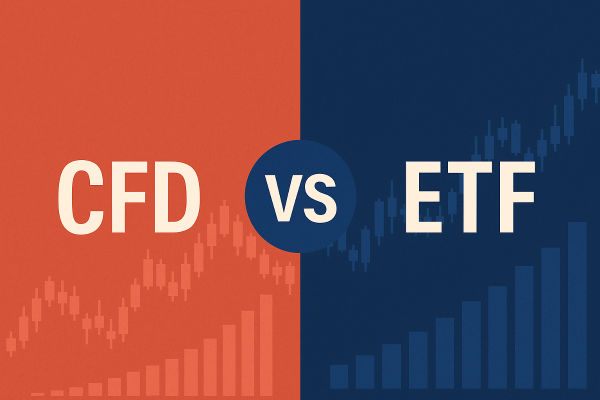Inflation is like a slow leak in a tyre. You may not feel it at first, but over time it affects how far you can go with the same amount of money. The same happens with savings and investments. Prices rise, purchasing power shrinks, and value erodes quietly in the background. To keep pace, investors look for inflation hedges that can help their wealth grow as prices climb.
An inflation hedge is not just a financial buzzword. It is a practical strategy used across real markets to maintain the value of capital when the cost of goods and services rises. In 2025, after years of rate hikes, geopolitical shifts, and volatile commodities, traders and investors are revisiting this old but essential idea. Understanding how an inflation hedge works in real markets can make the difference between preserving value and watching it disappear.
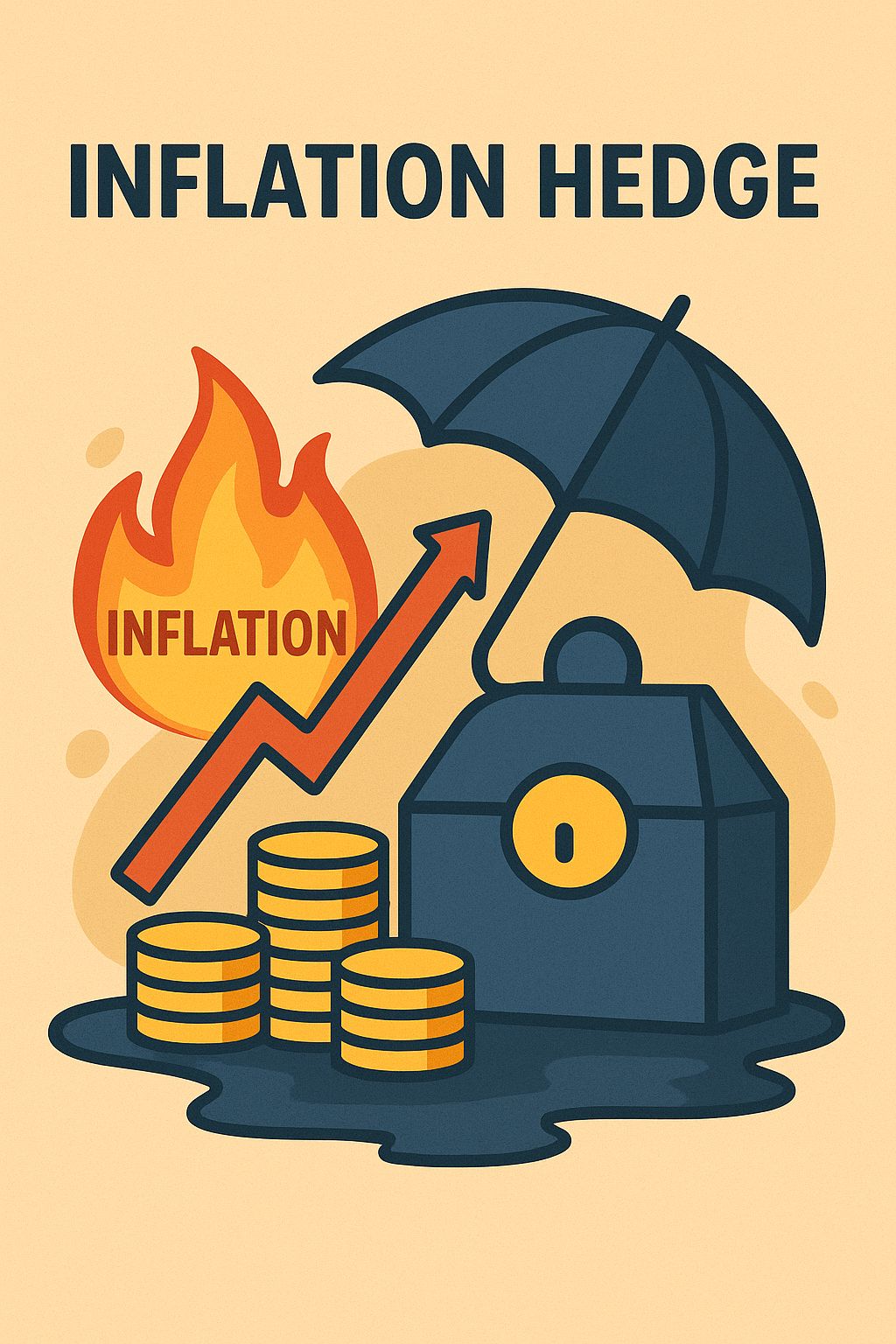
What Is an Inflation Hedge?
An inflation hedge is an asset or investment strategy that protects against the decline in purchasing power caused by rising prices. When inflation increases, the value of money falls. An effective hedge either keeps pace with or outperforms inflation, allowing investors to maintain their real wealth.
Common examples include gold, real estate, commodities, inflation-linked bonds, and equities in sectors that can pass higher costs to consumers. The concept is simple: if inflation is 4 percent and your investment grows by only 3 percent, you are losing purchasing power. The best hedges deliver returns that meet or exceed that inflation rate.
How Inflation Works and Why It Matters
Inflation represents the average rise in prices across an economy, usually measured by the Consumer Price Index (CPI). It is influenced by demand, supply, energy costs, and central-bank policy. A moderate level of inflation is considered healthy because it encourages spending and investment. However, when inflation remains high, it eats into savings and reduces real returns.
In 2025, global inflation sits around 3.1 percent, lower than the highs of 2022 but still above most central banks’ targets of 2 percent. That means cash parked in low-interest accounts is effectively losing value each year. For traders and investors, understanding inflation dynamics is crucial because it shapes interest rates, bond yields, and currency strength.
How Does an Inflation Hedge Work in Practice?
Inflation hedges work by moving in the opposite direction of inflation’s effects. When prices rise, some assets become more valuable because they are tied to the cost of goods, materials, or real economic demand.
Identifying the Environment: Investors monitor inflation indicators such as CPI, wage growth, and commodity prices.
Choosing the Asset: Assets like gold, oil, or inflation-linked bonds tend to rise in inflationary periods.
Rebalancing: As inflation pressures increase, investors adjust portfolios away from fixed-income instruments toward assets that benefit from price rises.
Monitoring Real Returns: The key is maintaining gains that outpace inflation, not just nominal profit.
A successful hedge adapts as market conditions change. It is not a one-time purchase but a continuous balance between growth potential and risk management.
Common Types of Inflation Hedges
Gold and Precious Metals
Gold has been viewed as the classic inflation hedge for decades. During the 1970s inflation boom, gold prices surged more than 700 percent. In 2025, gold continues to trade above US$2,300 per ounce, supported by central-bank buying and geopolitical uncertainty. Silver and platinum also attract attention when inflation fears rise, offering diversified exposure within the metals group.
Real Estate
Property acts as a natural inflation hedge because rents and building costs tend to rise alongside prices. Real-estate investment trusts (REITs) allow investors to access this sector without buying physical assets. Over long periods, property values often move in line with inflation or better, especially in growing urban regions.
Commodities
Commodities reflect the backbone of production costs. When inflation rises, energy, metals, and agricultural products typically see price gains. The Bloomberg Commodity Index has climbed nearly 15 percent since mid-2023, showing renewed investor interest in raw materials as a store of value.
Inflation-Linked Bonds
Treasury Inflation-Protected Securities (TIPS) and similar bonds in other countries adjust both principal and interest payments based on inflation. These instruments provide a direct hedge because their real returns are preserved even when inflation spikes.
Equities with Pricing Power
Companies in sectors such as consumer staples, healthcare, and utilities often maintain stable margins by passing higher costs to consumers. Shares of these firms can act as a soft hedge because their revenues rise with prices.
Real-World Examples of Inflation Hedges at Work
The 1970s Inflation Boom
During the late 1970s, inflation in the United States exceeded 10 percent. Investors who held gold, oil, or real estate preserved their purchasing power, while those in cash or long-term bonds suffered heavy real losses.
The 2021–2022 Post-Pandemic Surge
As economies reopened after COVID-19 lockdowns, supply constraints pushed global prices higher. Commodities such as copper and crude oil rallied, and real estate values surged in many markets. Investors who diversified into tangible assets outperformed those who stayed fully invested in bonds.
The 2024–2025 Moderation Phase
As inflation cooled, assets like gold stabilised, but infrastructure and energy funds continued to perform well. Investors treating inflation hedges as long-term components of diversified portfolios fared better than those who tried to time short-term moves.
The Risks of Using Inflation Hedges
Inflation hedges are useful but not foolproof.
Volatility: Commodities and metals can fluctuate widely, sometimes falling even when inflation is high.
Lag Effect: Real estate adjusts slowly and may underperform in early inflation phases.
Opportunity Cost: Inflation-linked bonds usually offer lower nominal yields in stable conditions.
False Signals: Markets may overestimate inflation, leading to premature portfolio shifts.
Managing these risks requires diversification, patience, and awareness that inflation cycles rarely move in straight lines.
How Traders Use Inflation Hedges in Portfolios
Traders blend multiple inflation hedges to balance exposure. A typical diversified portfolio might include commodities for short-term protection, gold for long-term stability, and equities for growth potential.
Some traders use CFDs on commodities or ETFs to gain quick exposure without large capital outlays. Others hedge indirectly by shorting long-term government bonds, which tend to fall when inflation expectations rise.
Modern trading platforms now make inflation hedging more accessible than ever, allowing small investors to build strategies that were once limited to institutions.
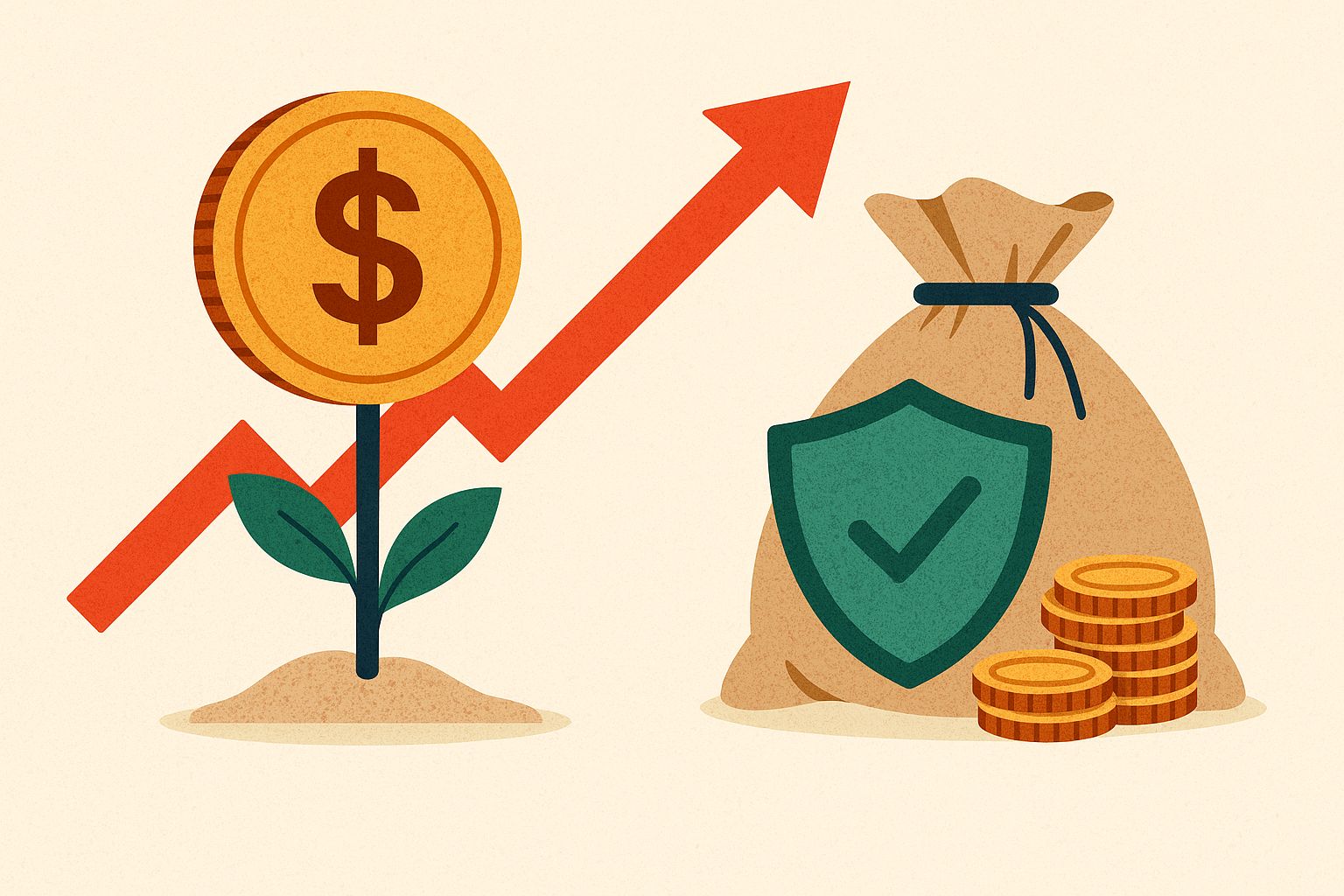
FAQs About How an Inflation Hedge Works
Q1. Is gold still the best inflation hedge?
Gold remains one of the most popular hedges, but its performance depends on monetary policy and investor sentiment. It works best when inflation is high and real interest rates are low.
Q2. Can cryptocurrencies hedge inflation?
Digital assets like Bitcoin are sometimes viewed as inflation hedges due to limited supply. However, their volatility and correlation with risk assets make them unreliable for consistent protection.
Q3. Do inflation hedges always make money when prices rise?
No. Some hedges lag because of market timing, policy changes, or broader economic slowdowns. They help reduce risk, not eliminate it.
The Big Picture
Inflation hedging is about preparation rather than prediction. Every generation faces its own version of price pressure, whether from war, resource scarcity, or policy shifts. The goal is to maintain the real value of money and investments through those cycles.
In today’s interconnected markets, understanding how an inflation hedge works means recognising that value preservation is as important as growth. The smartest traders are not those who chase every rally, but those who know how to shield their portfolios when inflation quietly erodes the ground beneath them.
Mini Glossary
Inflation: The rise in general prices across an economy, reducing the purchasing power of money.
Real Return: The profit from an investment after adjusting for inflation.
Inflation-Linked Bond: A bond whose principal and interest payments rise with inflation, protecting real value.
Commodities: Raw materials such as oil, gold, and wheat traded on global markets.
Purchasing Power: The ability of money to buy goods and services; it decreases when inflation rises.
Disclaimer: This material is for general information purposes only and is not intended as (and should not be considered to be) financial, investment or other advice on which reliance should be placed. No opinion given in the material constitutes a recommendation by EBC or the author that any particular investment, security, transaction or investment strategy is suitable for any specific person.
